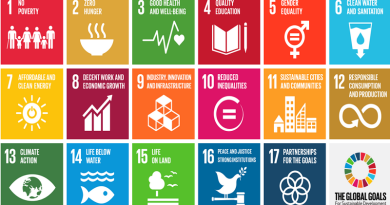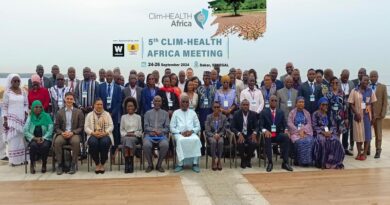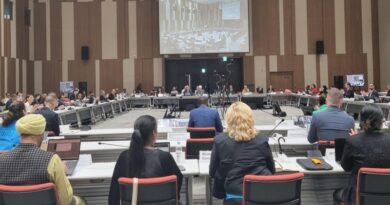Adaptation Fund board approves $82bn new projects to support vulnerable countries
The 42nd meeting of the Adaptation Fund Board concluded last Friday in Bonn, Germany, with the Board approving about US$ 82 million to support vulnerable countries across 12 new concrete adaptation projects while also breaking ground in making the Adaptation Fund the first multilateral climate fund to set new dedicated funding windows to foster Locally Led Adaptation (LLA).
The Board established a resource mobilization target for 2024 of US$ 300 million, with an added goal of a higher number of contributors than the previous year, to help meet rising global adaptation needs. It further decided to analyze options to potentially grow country and project funding caps in the future.
Additionally, the Board made several decisions aimed at making processes to access funding smoother as well as increasing grant options for developing countries. It also extended funding for one of its small grant partnerships through the Adaptation Fund Climate Innovation Accelerator (AFCIA).
Among the 12 adaptation projects approved, half were Direct Access projects which empower country ownership in adaptation through the Fund’s accredited national implementing entities (NIEs).
“I was honored and pleased to see the Board achieve such excellent and far-reaching results in responding to countries’ adaptation needs,” said Lucas di Pietro, of Argentina, who presided over his first meeting as the Board’s new Chair. “These new funding commitments and decisions will have concrete impacts in helping countries build resilience to climate change while making processes more efficient. At the same time, we’ve grown both the amounts and ranges of funding options available for developing countries.”
“I was very impressed by the amount of results the Board achieved, which will greatly benefit the vulnerable developing countries the Fund serves,” said Mikko Ollikainen, Head of the Adaptation Fund. “The Board’s decisions signal its ambition to enhance and grow the Fund’s excellent work, and will help us reach many more climate-vulnerable communities with needed adaptation solutions over the next year and beyond.”
With the Fund receiving a record amount of demand from countries over the past several years as global adaptation needs have grown, the Board decided to enhance funding options for countries that are available outside the single-country cap on regular projects. This included establishing new funding streams for grants to support Locally Led Adaptation (LLA) — which fosters engagement and leadership of local actors and stakeholders in adaptation projects on the ground.
One stream was approved for US$ 26.5 million and will merge LLA with the Fund’s existing funding window on Enhanced Direct Access into an improved and expanded window for the Fund’s national, regional and multilateral implementing entities, with up to US$ 5 million available per project. The other directs an additional US$ 35 million to a new LLA global aggregator program for channeling small LLA grants for entities that are not accredited with the Fund, such as CSOs, indigenous people organisations, local governments, community groups and entrepreneurs, among others. The Fund will seek expressions of interest from multilateral or regional implementing entities to serve as administrators of the grants, similar to how its AFCIA program is run.
With these decisions, the Adaptation Fund becomes the first multilateral climate fund that has fully operationalized the global LLA principles, and the Board will further examine options at its next meeting for establishing a third LLA window, aimed at funding regional LLA projects. It will also analyze options for performance indicators of LLA projects.
The Board expanded funding allocations for its other programs that are available for countries outside of the country cap, as well. It allocated US$ 60 million for its regional projects window, US$ 30.3 million for large innovation grants, US$ 1.5 million each for small innovation and learning grants, and US$ 1 million for scale-up grants. In the process, the Board increased the maximum amount allowed per learning grant, from US$ 150,000 to US$ 500,000 to help NIEs capture and disseminate practical lessons from adaptation projects on a grander scale.
It further set ranges and increased funding for the Fund’s project formulation grants, which are designed to help entities develop project concepts into full proposals. These will be based on project size, ranging from US$ 50,000 to US$ 150,000 for developing single-country projects, US$ 150,000 to US$ 250,000 for regional projects, and an additional US$ 100,000 available to further develop LLA project concepts.
The Board approved the work plans for the next fiscal year of the Fund and AF’s Technical Evaluation Reference Group (AF-TERG), and made several other decisions to enhance the Fund’s policies and overall work.
It decided to further timely preparations of the Fund from serving the Kyoto Protocol to the Paris Agreement; advance a new AF-wide policy to safeguard against sexual exploitation, sexual abuse and sexual harassment; make policy changes to allow implementing entities flexibility in applying their own policies and procedures to enable compliance with AF standards and policies; and enhance civil society participation in Board meetings by establishing a new level of “active” civil society observers.
The Board also advanced efforts to report on the Fund’s carbon footprint, update its environmental and social policy, and prepare for a comprehensive evaluation of the Fund’s work by the AF-TERG. It reaccredited its national implementing entity in Ethiopia, the Ministry of Finance, and agreed to further discussions with the Green Climate Fund to improve efficiency and coherence of accreditation processes for implementing entities between the two funds.
In addition, Nina Alsen of Germany served at the meeting as the Board’s newly elected Vice-Chair.
Project approvals included:
US$ 4 million to enhance resilience of coastal communities in Belize, to be implemented by the Protected Areas Conservation Trust;
US$ 2.9 million for the National Fund for Environment and Climate to carry out a project to build resilience of forests in the central region of Benin;
US$ 4.9 million for the Environmental Management Agency to build resilience in dry zones of Zimbabwe;
US$ 5.7 million for the Pacific Community to build capacity of nature-based seawalls in Fiji;
US$ 10 million for the Development Bank of Latin America to strengthen socio-ecological resilience in coastal areas and adaptive infrastructure of Uruguay;
US$ 10 million for UN-Habitat to build adaptation capacity through small-scale infrastructure investments in Cambodia;
US$ 9.8 million for the International Fund for Agricultural Development to improve climate-resilient pasture management, market access and dairy modernization in Georgia;
US$ 10 million for the World Food Programme (WFP) to enhance climate-resilient livelihoods in dry regions of Nicaragua;
US$ 4 million for an Enhanced Direct Access (EDA) project in Honduras to be implemented by the Mennonite Social Action Commission to build adaptation capacities of indigenous and Afro-descendant coastal communities;
US$ 5 million for an EDA project by Profonanpe to set up an innovative fund for improving adaptation of vulnerable ecosystems in northern Peru;
US$ 4.9 million for a large innovation grant for WFP to innovate adaptation financing of smallholder farmers in Bhutan;
US$ 125,100 for a learning grant for the Environmental Project Implementation Unit to foster adaptation knowledge in Armenia;
US$ 10 million for the UN Environment Programme to administer phase 2 of its small grants partnership through AFCIA;
and US$ 575,000 in project formulation grants to go toward helping develop several additional project concepts and pre-concept notes (the Board endorsed 14 project concept ideas).




